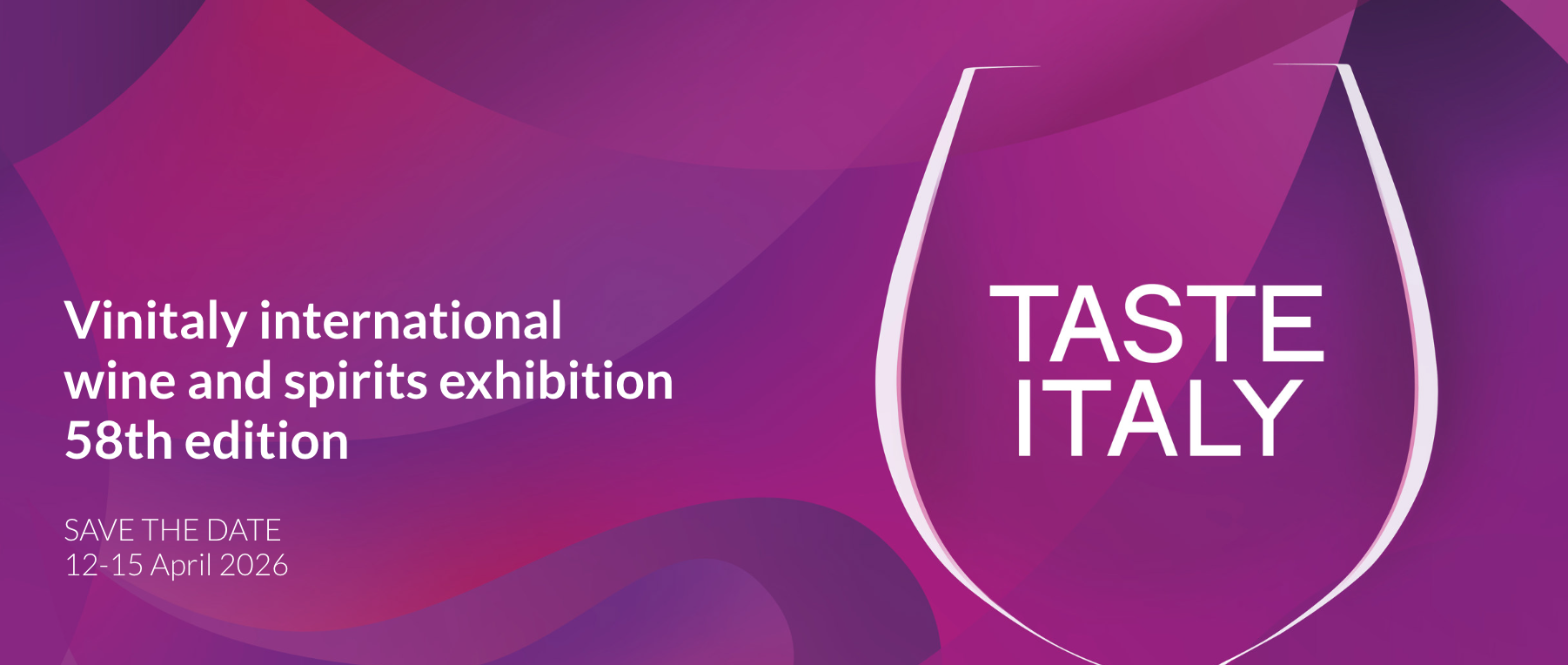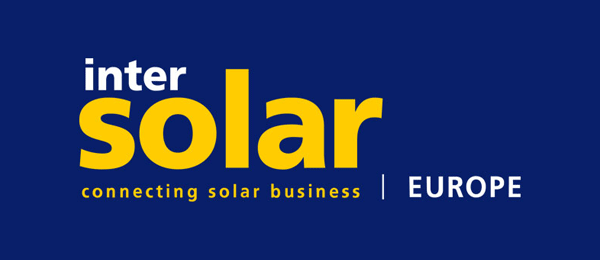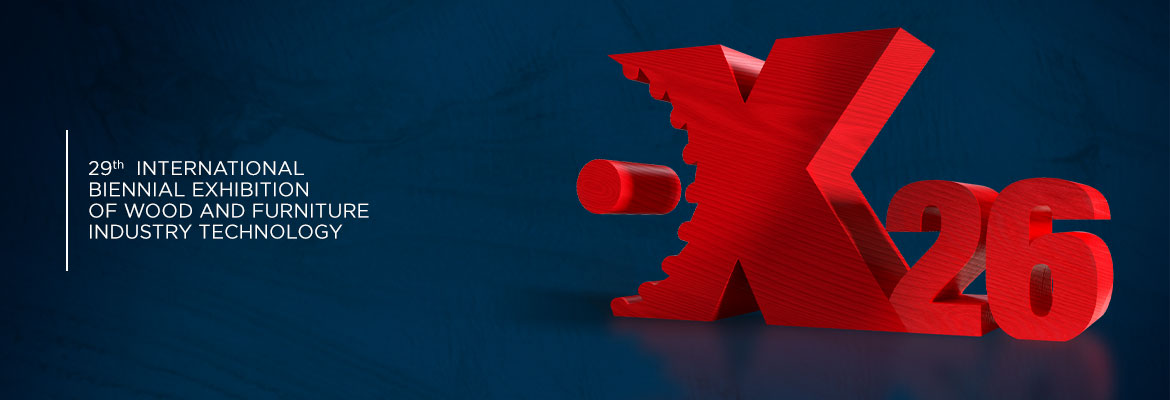
XYLEXPO 2026 Wood and Furniture Fair: Milan Presents Advances in the Sector
From June 9 to 12, 2026, this biennial international event will transform FieraMilano-Rho into the global epicenter of woodworking technology. Not only will we witness the 29th edition of this major biennial, but we will also see its integration into an innovative collaborative exhibition format known as *Matec Materiali e Tecnologie*.
The Xylexpo 2026 Wood and Furniture Fair Will Mark a Before and After in the Industrial Exhibition Landscape
From June 9 to 12, 2026, this biennial international event will transform FieraMilano-Rho into the global epicenter of woodworking technology. Not only will we witness the 29th edition of this major biennial, but we will also see its integration into an innovative collaborative exhibition format known as Matec Materiali e Tecnologie.
This edition will bring together over 260 exhibitors, with 33% international participation, spread across approximately 25,000 square meters of exhibition space. For the first time, our fair will establish a strategic alliance with Plast, the international trade fair for plastics and rubber industry technologies, creating new opportunities for fine wood furniture manufacturers. This cross-sector collaboration proposes a joint focus on technologies and processes that transcend traditional materials, fostering innovative connections between different manufacturing sectors.
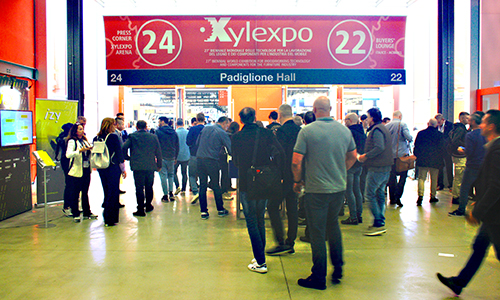
Xylexpo 2026 Ushers in a New Exhibition Era
The international biennial Xylexpo will radically change its concept in 2026, marking a turning point in its historical trajectory. This renewal reflects the evolution of an industry seeking to adapt to current demands through a more integrated vision of manufacturing.
Introducing the New Matec Format
"Matec – Materiali e Tecnologie" emerges as the new exhibition platform that will host Xylexpo 2026 at FieraMilano-Rho. This innovative format is specifically designed for advanced manufacturing industries, creating an environment where technologies for wood, plastics, and composite materials converge in a shared space.
This proposal represents a complete reconceptualization of the event, structuring the fair around production segments, shared technologies, and common materials. This format is not limited to being a simple sectoral exhibition but rather represents an ecosystem where traditionally separate industries can discover synergies and collaboration opportunities.
Additionally, within the pavilions assigned to Xylexpo (Pavilion 14 and Pavilion 18, West Gate), significant space will be dedicated to "Composites Future," an expo-conference focused on composite materials and technologies. This initiative is supported by Assocompositi, the Italian association representing companies in the composite materials sector.
Objectives of the Cross-Sector Collaboration
The strategic alliance between Xylexpo and Plast responds to the growing demand for solutions focused on multi-materiality. This approach seeks to reflect contemporary industrial reality, where boundaries between sectors are increasingly blurred, and technologies transcend traditional materials.
Key objectives of this collaboration include:
- Creating a more dynamic and functional environment for manufacturers, suppliers, and professionals
- Fostering knowledge exchange between complementary industries
- Establishing a platform that allows visitors to explore technologies relevant not only to their primary industry but also to related fields
- Laying the groundwork for potential future expansions to include other manufacturing sectors
This initiative represents a significant shift in how industrial trade fairs are conceived—moving from isolated events to integrated platforms that reflect technical convergence across different production sectors.
Industry Reactions to the Announcement
The announcement of this new format has generated positive expectations in the industry. Enrico Aureli, President of Xylexpo and Acimall (the Italian woodworking machinery manufacturers' association), stated:
"The next edition of Xylexpo is a milestone in our long journey to create stronger, more tangible synergies for our audience."
Aureli also emphasized that "by bringing together associations from various sectors—such as woodworking, plastics, ceramics, and packaging—we are laying the foundation for a more integrated and collaborative future." This vision reflects the maturity of an industry that understands the need to adapt to an increasingly interconnected industrial landscape.
The creation of the Federazione Confindustria Macchine and the closer collaboration between associations representing equipment manufacturers for various sectors allow us to envision the future of the fair from a renewed perspective. Organizers anticipate that this approach will offer exhibitors and visitors an innovative setting to explore technologies developed in adjacent sectors that increasingly provide solutions to shared challenges.
Xylexpo Partners with Plast to Drive Multi-Material Innovation
In the 2026 trade fair landscape, the strategic alliance between Xylexpo and Plast represents an innovative move to address changing industrial needs. This unprecedented collaboration will connect two traditional manufacturing sectors under one roof, creating an environment where multi-material solutions take center stage.
Why Wood, Plastics, and Rubber Are Joining Forces
The union of these industrial sectors responds to a growing trend: the demand for solutions and tools centered on multi-materiality. This concept is gaining importance as the boundaries between traditionally separate industries become increasingly blurred.
The strategic initiative recognizes that many technical challenges transcend the limits of a single material. Today, many manufacturers simultaneously work with wood, plastics, and composite materials to create innovative products, especially in the contemporary furniture sector.
Mario Maggiani, General Manager of Promaplast, noted that this synergy is particularly relevant due to the existing complementarities between both sectors. For example, some machining centers originally designed for wood are now also used in processing plastics and other materials.
What Each Industry Brings to the Synergy
The wood sector, represented by Xylexpo, contributes its expertise in:
- Advanced technologies for processing natural materials
- Surface finishing and treatment processes
- Solutions for fine wood furniture manufacturing
Meanwhile, the plastics and rubber industry, under the umbrella of Plast, contributes:
- Innovative molding and extrusion techniques
- Developments in high-performance synthetic materials
- Solutions for technical and decorative components
This technological convergence will allow visitors to discover solutions relevant not only to their specific industries but also from related fields that address common challenges. Additionally, the fair will dedicate a prominent space to "Composites Future," an expo-conference focused on composite materials and technologies, supported by Assocompositi, the Italian association of composite materials professionals.
The joint proposal presents an innovative exhibition design structured around production segments, shared technologies, and common materials. This approach could expand in future editions to include other industrial sectors, creating a more dynamic and functional environment for all participants.
Statements from Enrico Aureli on the Alliance
"The next edition of Xylexpo represents a milestone in our long journey to create stronger, more tangible synergies for our audience," declared Enrico Aureli, highlighting the strategic importance of this new direction.
Aureli further emphasized that "by bringing together associations from various sectors—such as woodworking, plastics, ceramics, and packaging—we are laying the foundation for a more integrated and collaborative future." This vision reflects the commitment to an exhibition model that recognizes the interdependence of different manufacturing processes.
From Plast’s perspective, the fair seeks to reaffirm its "central role in the plastics and rubber industry," offering a unique opportunity for exhibitors and visitors to stay updated, foster innovation, and develop valuable business contacts.
This cross-sector collaboration marks a paradigm shift in the traditional concept of industrial trade fairs, transforming them from isolated events into integrated platforms that accurately reflect technical convergence across different production sectors. Consequently, fine wood furniture manufacturers will find in this format an exceptional opportunity to explore new material combinations and hybrid processes that enhance their production capabilities.
Composites Future Introduces New Technologies to the Fair
One of the most innovative aspects of the Xylexpo 2026 Wood and Furniture Fair will be the incorporation of Composites Future, a space dedicated to new composite material technologies that will significantly expand the traditional exhibition offerings.
What Is Composites Future and Its Role in Xylexpo?
Composites Future is a specialized expo-conference focused on composite materials and technologies, occupying a prominent space in Xylexpo’s pavilions (Pavilion 14 and Pavilion 18, West Gate access). This strategic component acts as a natural bridge between the plastics and wood sectors, facilitating the integration of these traditionally separate fields.
This initiative represents a fundamental element of the fair’s new multi-material approach. Additionally, its inclusion reinforces the vision of creating an environment where professionals from different sectors can discover complementary technological solutions that address shared needs.
Support from Assocompositi and Expo-Conference Content
Composites Future has the official backing of Assocompositi, the Italian association representing all players in the industrial composite materials sector. This institutional collaboration ensures the quality and relevance of the content presented at the expo-conference.
The initiative will offer attendees:
- Specialized conferences on advancements in composite materials
- Exhibitions of emerging technologies for manufacturing with these materials
- Networking spaces for professionals from different industries
- Practical demonstrations of applications across various manufacturing sectors
Thus, Composites Future positions itself as an essential element within the new exhibition design based on production segments, shared technologies, and common materials.
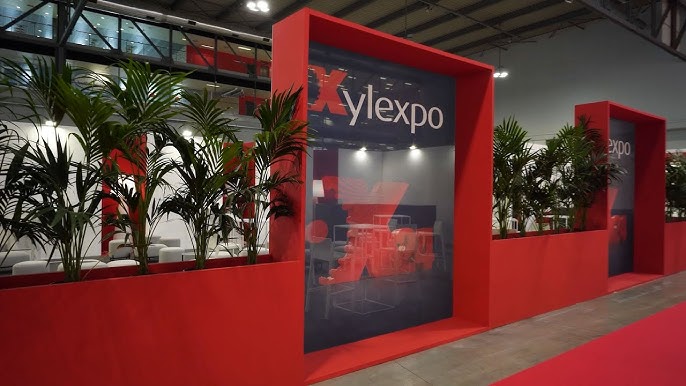
Highlighted Technologies in Composite Materials
Although specific details about the technologies to be showcased at Composites Future will be revealed closer to the event date, the expo-conference will cover innovative solutions in the field of composite materials with direct applications in fine wood furniture manufacturing.
Enrico Aureli, President of Xylexpo and Acimall, emphasized that this integration allows "looking at the future of our trade fairs from a different perspective, seeking greater integration and collaboration to offer exhibitors and visitors an innovative setting."
Composite material technologies represent a natural evolution for the wood sector, as many manufacturers seek to incorporate these advanced materials into their production processes. Additionally, this technological convergence opens new possibilities for creating hybrid products that combine the warmth and aesthetics of wood with the technical performance of composites.
The inclusion of Composites Future underscores Xylexpo’s commitment to cross-sector innovation and its ability to adapt to an increasingly integrated and multi-material industrial landscape.
FieraMilano-Rho Adjusts Its Schedule Due to the Olympics
The Milan-Cortina 2026 Winter Olympics have created a domino effect on Italy’s trade fair calendar, requiring a significant reorganization of events scheduled for that year.
Date and Pavilion Changes for 2026
The 2026 edition of the Xylexpo Wood and Furniture Fair has had to adapt to the new Olympic circumstances, rescheduling its dates to June 9–12. This adjustment directly responds to FieraMilano-Rho’s designation as an official venue for some competitions in the Milan-Cortina Winter Games.
During the international sports event, the Milan exhibition center will host speed skating and ice hockey events, necessitating the rescheduling of numerous trade fairs planned for that period. Additionally, this exceptional situation has led to a reassignment of traditional exhibition spaces.
Consequently, Xylexpo 2026 will take place specifically in Pavilions 14 and 18, located in the West Gate section of the exhibition center. This new location offers strategic advantages for implementing the Matec format, enabling better integration with other planned exhibitions.
Logistical Impact on Exhibitors and Visitors
The schedule modification poses significant challenges for international exhibitors, who will need to adjust their logistical plans to participate in this special edition. However, holding the event in June could present an opportunity to attract visitors looking to combine their professional trip with the pre-Olympic atmosphere in the city.
Moreover, the concentration of several specialized trade fairs around the same dates creates potential synergies, making it easier for professionals in the fine wood furniture sector to optimize their travel plans by attending complementary events.
How the Exhibition Space Is Being Reorganized
The new layout is not just a simple relocation. Pavilions 14 and 18 have been strategically selected to host the innovative exhibition proposal, with significant space dedicated to "Composites Future," the specialized expo-conference on composite materials and technologies.
This spatial reorganization perfectly reflects the philosophy of the new Matec format, structuring the exhibition around production segments and shared technologies rather than following the traditional separation by industrial sectors. In this way, the venue will adapt its configuration to facilitate exploration of cross-sector connections, promoting a more integrated experience for all participants.
Organizers Envision a More Connected and Global Fair
Xylexpo’s visionaries have designed a revolutionary exhibition strategy for 2026, focusing on connection and integration as the event’s main pillars.
Design Based on Industrial Segments
The new exhibition design, structured around industrial segments, technologies, and materials, promises to generate more innovative connections. This approach goes beyond the traditional separation by sectors, grouping products and solutions based on their application and functionality. Thus, Pavilions 14 and 18 will house specialized areas reflecting technical convergence across different production processes.
Potential Sectors to Be Added in Future Editions
Organizers are actively exploring the possibility of including other manufacturing sectors in future editions. Additionally, this format could expand to integrate industries such as ceramics and packaging, creating a more comprehensive industrial ecosystem. Consequently, the proposed model lays the groundwork for organic growth that responds to the real demands of the global market.
How Fine Wood Furniture Manufacturers Will Benefit
Fine wood furniture manufacturers will find a conducive environment to discover technologies relevant not only to their primary industry but also from related fields. Additionally, they will have access to integrated digital solutions that optimize all production phases, from data preparation to technical support. This multi-material experience will allow producers to better adapt to a context where the boundaries between traditional industries are increasingly blurred.
Conclusion
The Xylexpo 2026 Wood and Furniture Fair undoubtedly represents a turning point for the entire manufacturing industry. This renewed exhibition proposal goes far beyond a simple sectoral trade show, transforming into an integrated ecosystem where wood, plastics, and composite materials converge under the innovative umbrella of Matec.
Certainly, the strategic alliance with Plast responds to a contemporary industrial reality where sector boundaries are progressively fading. This multi-material vision reflects the current needs of manufacturers seeking increasingly versatile technological solutions adaptable to diverse production processes.
The inclusion of Composites Future further strengthens the event’s innovative character, establishing natural bridges between traditionally separate technologies. This proposal has the necessary institutional backing to ensure relevant, high-quality technical content.
Despite the logistical challenges posed by the Milan-Cortina 2026 Winter Olympics, organizers have successfully adjusted dates and spaces to preserve the event’s essence while enhancing synergies between different manufacturing sectors.
The future of Xylexpo looks promising, with potential expansions into other complementary industrial fields. This flexible and adaptive structure likely represents the greatest added value for all participants—especially fine wood furniture manufacturers, who will find an ideal environment to discover innovative technologies applicable to their production processes.
Ultimately, this edition marks the birth of a new trade fair concept that transcends traditional sectoral separation, embracing an integrated model that accurately reflects the growing interconnection between different manufacturing industries. The Xylexpo 2026 Wood and Furniture Fair thus positions itself as an international benchmark for promoting multi-material solutions in an increasingly connected and global industry.



